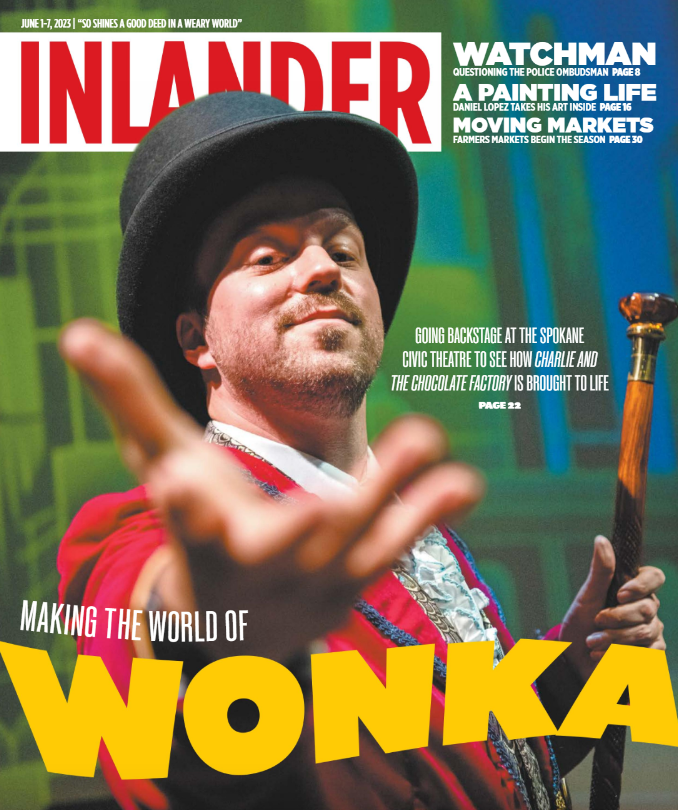
(Jerrod Phelps as Willy Wonka on the cover for the Inlander)
Everyone knows the story of Charlie, the Golden Ticket and his fateful visit to Willy Wonka’s chocolate factory. And if you don’t, well, I’m sorry. It’s a great story. Good news is the Spokane Civic Theatre has the play on its main stage through June 18. When you go and see it, you may ask, how in the world did they pull off such a production? Look no further than these pages, where we peek behind the curtain to reveal how such a magical tale is brought to life, from auditions all the way to opening night. It’s everything you ever wanted. Just don’t forget what happened to the person who suddenly got everything they wanted.
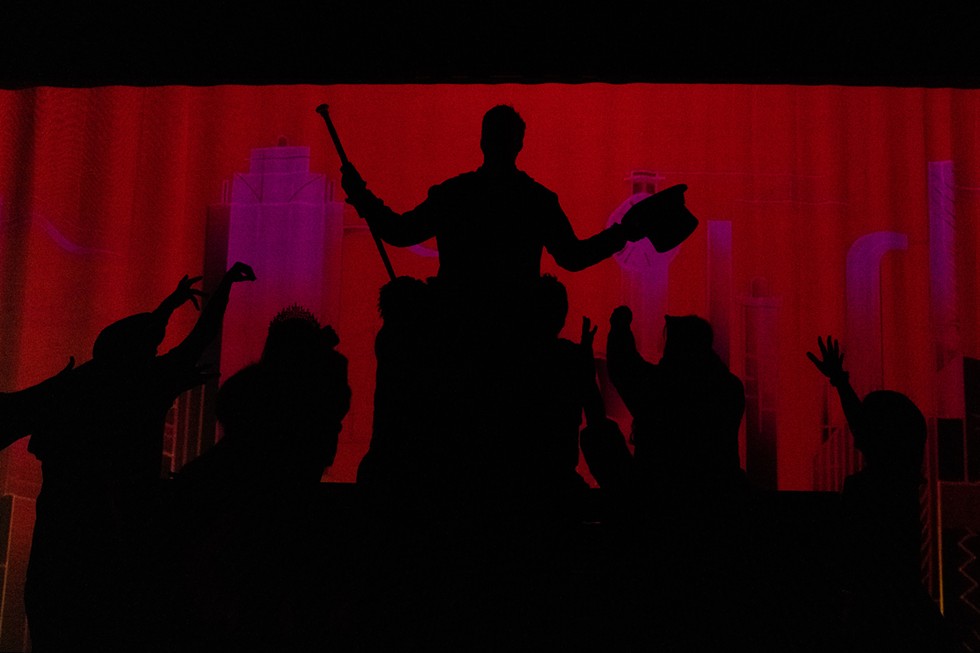
MARCH 14: AUDITIONS AND CALLBACKS
Well over two months before the curtain’s first rise on Charlie and the Chocolate Factory, amateur actors descend on the Spokane Civic Theatre with high hopes of appearing in the production. It’s the regional premiere of this 2013 musical and the grand finale to the theater’s 75th season, which makes the stakes slightly higher than usual.
This is already the second round of auditions. The first round, split over the past two days, brought in more than 90 actors. The number who are here on this Tuesday evening has been whittled down by half. And by the end of the night their ranks will be thinned by half again. As large as the production is, there are only about two dozen roles available.
Some actors are on the Civic’s main stage belting out the songs over music director Henry McNulty’s keyboard accompaniment. Some are in side rooms, scripts in hand, running through key scenes. Some are in the lobby with choreographer Jillian Kehne, performing a tabletop tap-dance routine with — for reasons that will become evident in later rehearsals — shoes on their hands.
When the actors aren’t in one of these stations, they’re anxiously waiting to be called. And waiting. And waiting some more. For as much activity as there is, there’s also a lot of patient standing-by.
When it is an actor’s turn, they’re being studied, sized up, scrutinized. Members of the creative team are taking handwritten and mental notes, deliberating with colleagues in low voices. Stage managers Mary George and Lauretta Heaney always seem to be arranging neat piles of paper organized by character, scene or score. There are notecards on every individual; micro-dossiers with their names, preferred roles and availability.
At the start of the evening there are six possible Charlies. Several would-be Grandpa Joes. At least two potential Mrs. Gloops and Mrs. Buckets. And with each permutation of actors, you can see the different Charlie and the Chocolate Factory that might result. Troy Nickerson, the show’s veteran director, is constantly reconciling the show he’s envisioning with the unique qualities that each actor brings. Around 10 pm, with only a few people left in the building, he’s still busy conferring with Kehne, McNulty and the others about who’s right for each role.
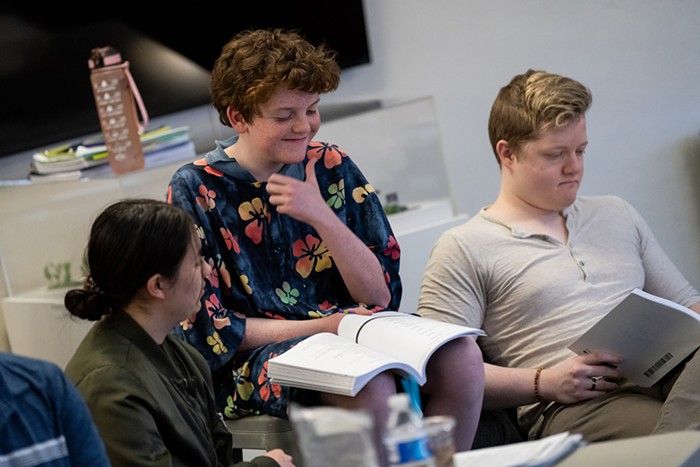
LISTEN!
There’s an audio companion to this story on Spokane Public Radio. It includes sound captured during the auditions and rehearsals, plus field interviews with the cast and creative team of Charlie and the Chocolate Factory. To hear it when it first airs, tune to the Thursday Arts (P)review on KPBX (91.1 FM) at noon on June 1. Or, you can always listen at spokanepublicradio.org or by checking out the Thursday Arts (P)review podcast on Apple, Spotify, Stitcher or Google Podcasts.
MARCH 28: FIRST READ-THROUGH
Two weeks later, the actors assemble for the second time since receiving a congratulatory phone call. The cast is seated around tables arranged in a square in the Civic’s lobby. They read through the script from start to finish with only brief pauses for laughter. Nickerson glosses over the songs with the phrase, “Singity sing, sing, sing.” Some actors — Mitch Heid as gluttonous Augustus Gloop, Tamara Schupman as flighty Grandma Josephine — are already comfortably in character, whereas others are still getting a feel for their role, the dialogue and their fellow cast members. Once Connie Mack Overstreet delivers Charlie’s final line to a collective “Awww” and applause, everyone soon disperses.
This was the easy part. Now the real work begins.
MAY 2: ACT I RUN-THROUGH
In the five weeks since the very first reading, the cast has been divvied up to work separately on different components of the show. They’ve rehearsed specific songs or choreography — sometimes individually or in pairs, most often in small groups. Rehearsals aren’t held every single day for every single actor, but at least four evenings per week and one weekend afternoon are dedicated to going over music, dance moves or blocking with the principals. Some of the rehearsals have taken place in the Civic’s studio theater, but many have been held in Kehne’s and McNulty’s homes. This is more a matter of logistics than anything else, as National Pastime is currently running on the main stage.
Tonight they’re combining the results of those separate rehearsals into a full run-through of the show’s first act, which takes Charlie from a destitute chocolate aficionado to a Golden Ticket winner who’s about to enter Willy Wonka’s mysterious factory. As the actors perform against unpainted stick-frame sets, director Nickerson typically hovers no more than a few feet away, as if sculpting the action through sheer proximity. Unlike the read-through back in March, this is not about expediency. Each scene is replayed two, three, four times, sometimes more, while the offstage cast thumb through scripts or scroll on their phones.
There are minor discussions over how soup bowls are passed, where laundry baskets can be placed, where coats should hang. The four bedridden grandparents in the Bucket household spontaneously come up with a novel snoring routine that adds a little color and musicality. “That’s darling,” Nickerson says. It’s now a permanent part of the production.
The biggest visible change is that the show’s original Willy Wonka had to leave for personal reasons. Taking his place is the actor first cast as Veruca Salt’s father, Jerrod Phelps. Nickerson is just grateful that the swap happened while they’re still counting weeks and not days before the first curtain call.
Taking the cast changes in stride, the actors are mostly off-book (i.e. not reading from the script) — though calls for “Line!” punctuate the rehearsals, sometimes in quick succession — and the choreography has solidified. But with a little over three weeks to go until opening night, large portions of the production still seem unsettled and barebones.
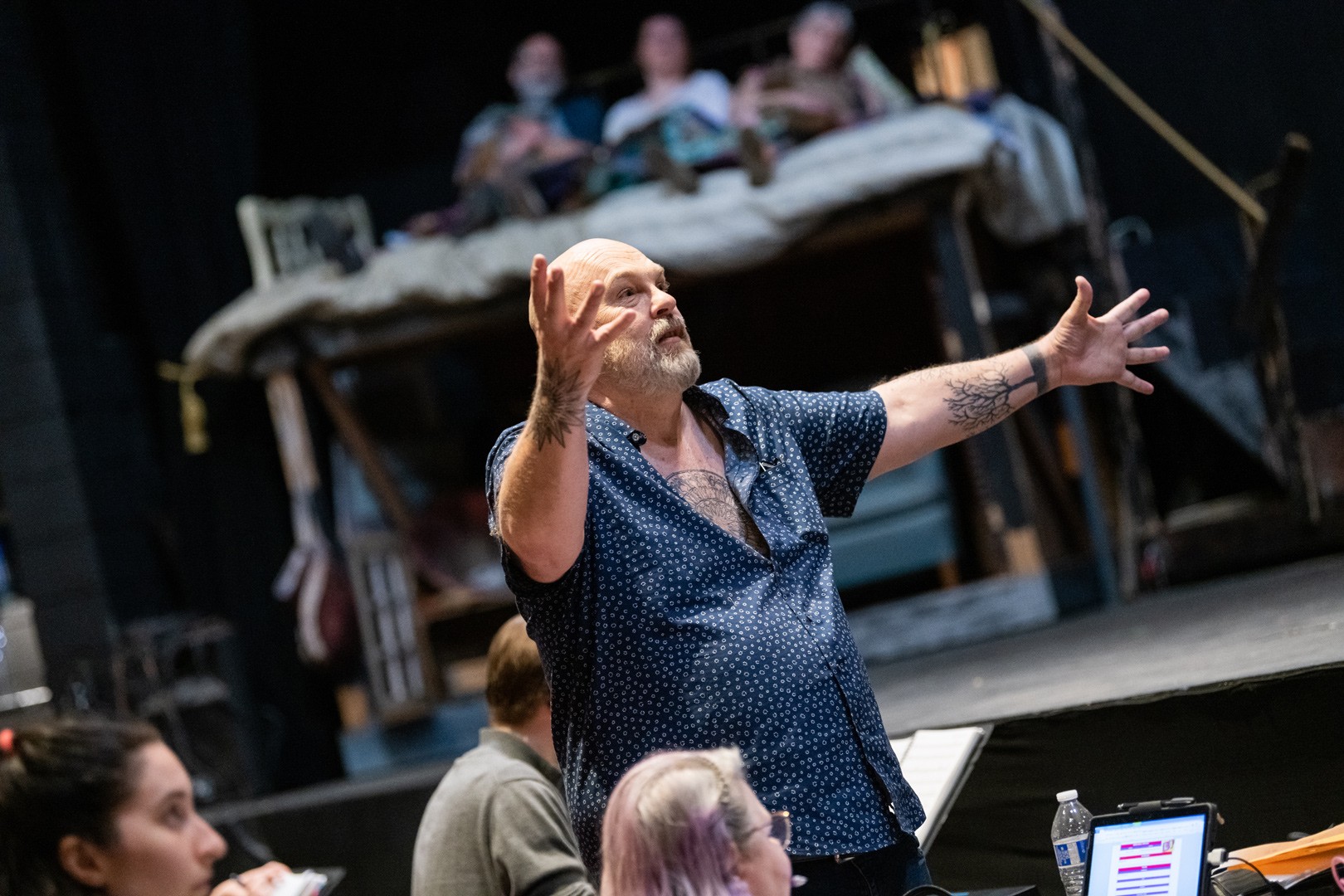
MAY 11: PAPER TECH
What a transformation. Just nine days after the Act I run-through, the production feels like it’s begun to coalesce around a core vision. Set designer Jeremy Whittington’s backdrops are painted now, and his art deco, Metropolis-style backdrop has leapt from his sketches to stage. The beds that were wooden frames one week earlier are now covered in a custom quilt that props advisors Trudy Rogers and Marty Kittleson whipped up. Lines flow more smoothly, and the choreography has tightened.
That’s not to say all the kinks have been ironed out. Thomas Heppler who plays Grandpa Joe is absent tonight, so Melody Deatheridge, a familiar face on the community theater stage, has been asked to read his lines. Phelps’ Wonka is hiding a supermarket granola bar in his pocket instead of a magical Wonka Bar. Jamie Suter, the lead costumer, isn’t yet sure how gum-chewing Violet Beauregarde (played by Lacey Olson) is going to balloon into a giant blueberry when she runs afoul of Wonka’s rules. Fortunately, the past few weeks have refined the clever way the ensemble will shrink to the size of Oompa Loompas: puppet bodies.
Although the broad structure of Charlie and the Chocolate Factory now appears more fully baked, tonight’s focus is the icing — things like props, flow, sound cues and lighting. The “paper tech” is so named because all of these undecided elements are proposed, finessed and then written down, at which point they become more or less fixed. Suter, Rogers and Kittleson are constantly on hand as part of that process, as is lighting designer Bryan Durbin. The results are a mix of the ideas they arrive with and their creative responses to what the production demands. Like every rehearsal milestone before it, the paper tech is a cycle of meticulous refinement that involves time, dedication and patience.
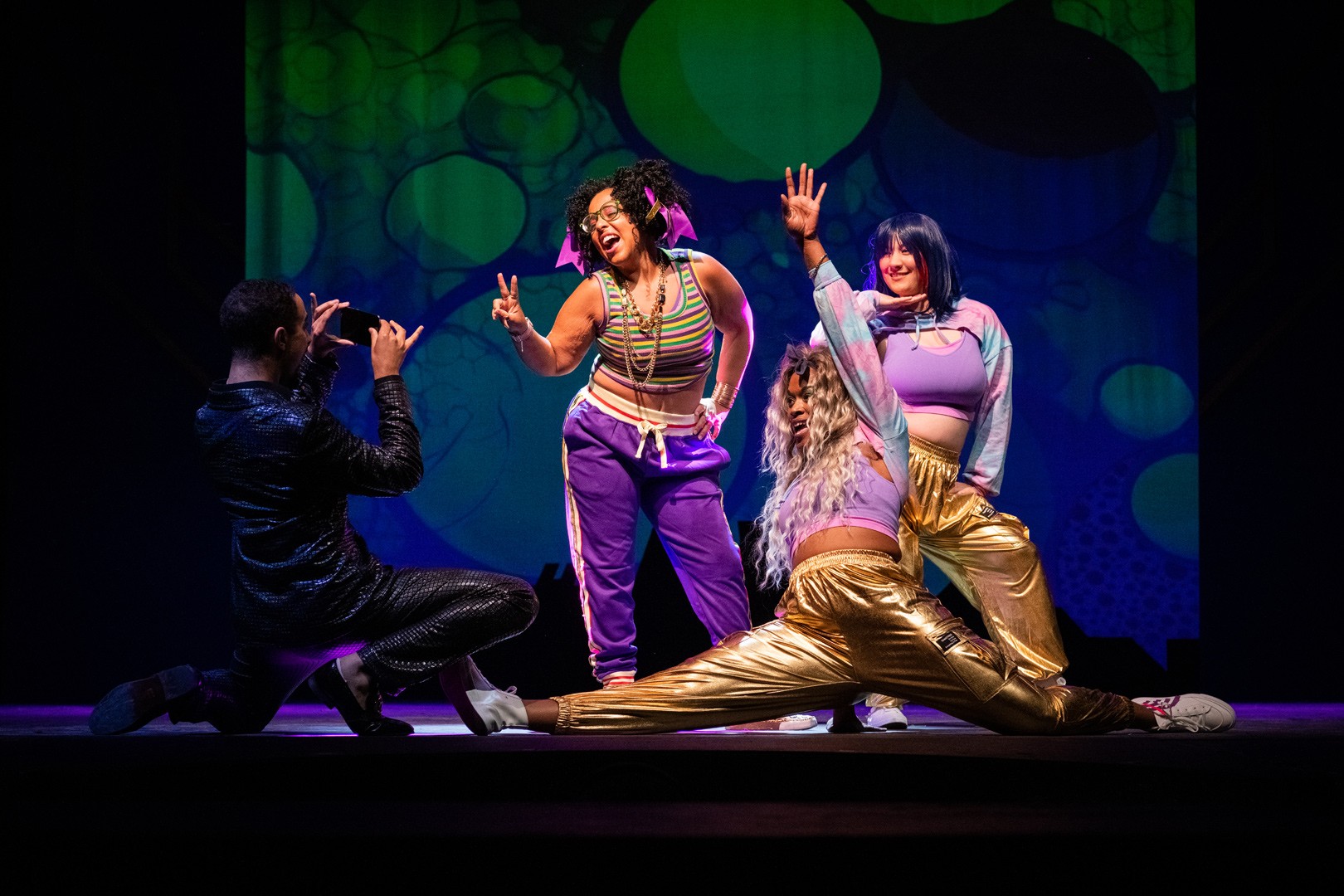
MAY 20: SITZPROBE AND START OF HELL WEEK
There are many firsts in the evolution of a musical theater production, and the sitzprobe — German for “seated rehearsal” — marks the very first time that the full orchestra and the singers sit down together. Earlier this morning, that’s precisely what happened. McNulty and the six other musicians joined the cast in performing each song, one after the other. Up to that point, the actors had only ever sung to McNulty accompanying on keyboard.
This afternoon, the cast is back on stage and one step shy of dress rehearsal. Though it’s packed with actors-in-waiting, the backstage area is dark, illuminated only by mobile phones and wall-mounted stage monitors. There’s very little incidental activity in the wings. Nearly all of the elements that were identified during the paper tech are now incorporated. The only missing piece, it seems, is the costumes.
Some details still aren’t settled. On which step should Wonka stand during the Act I finale? Was Charlie meant to cross here or there? Should the newscasters be positioned to the left or the right? Where was that spotlight supposed to fall? How high should the winners raise their Golden Tickets? The debates can stretch on for minutes, but the common goal is delighting the audience.
Backstage, an anonymous voice poses a hushed question: “Are we ever going to move on?” “Someday,” comes the whispered reply.
There are just six days left until opening night. Between now and then is the stretch known as Hell Week, which is every bit as frantic and fraught as it sounds.
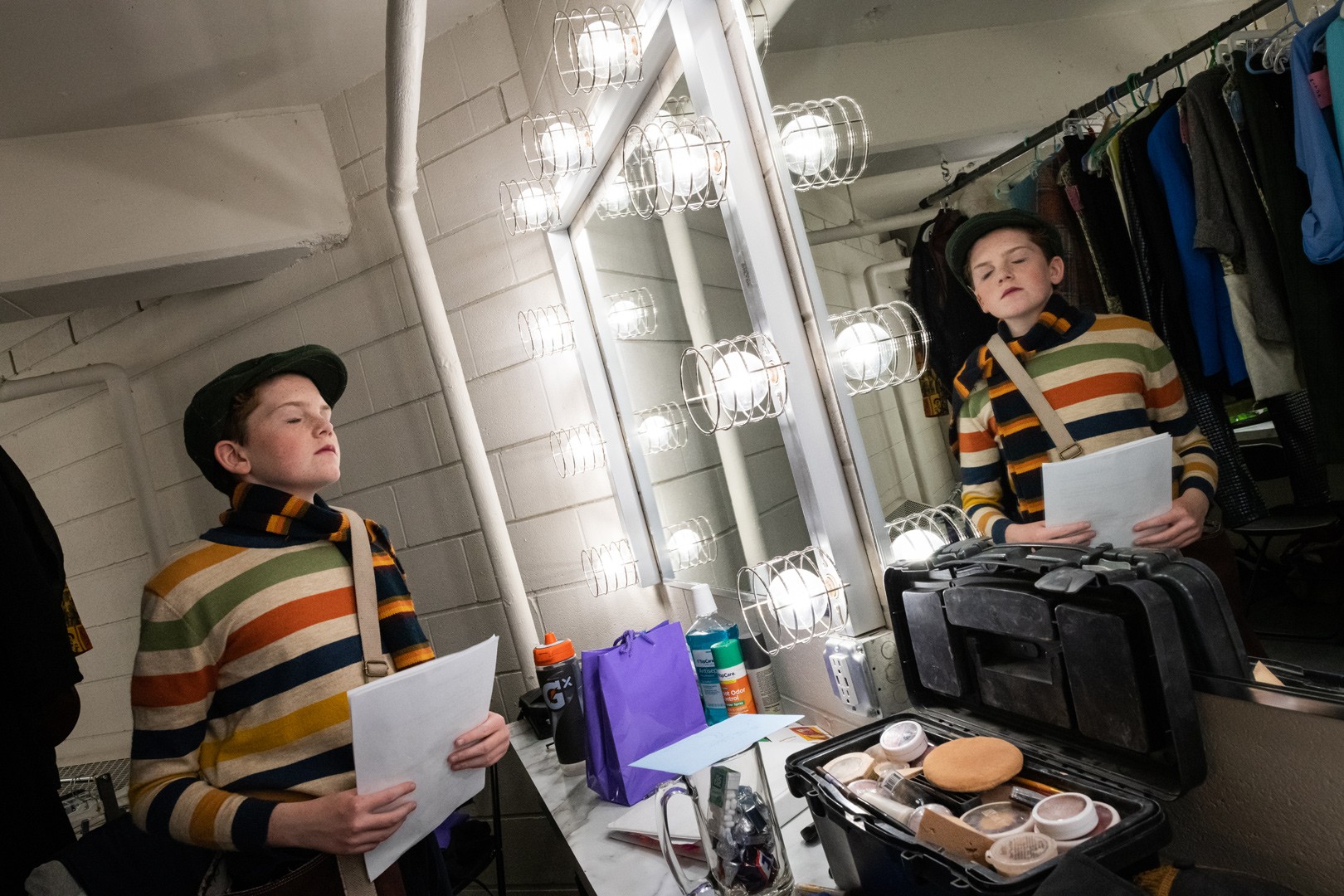
MAY 26: OPENING NIGHT
This is it. Tonight is the culmination of everything that the cast, crew and creative team of Charlie and the Chocolate Factory have poured into this production over the past 11 weeks.
Directly below the Civic stage is a network of corridors, chambers and common areas buzzing with actors and musicians. The energy in the green room is palpable. Phelps says he’s anxious but is somehow channeling it. Overstreet is nervous, too, but he knows enough to avoid the self-perpetuating spiral of worry. Even Nickerson, with over 40 years’ worth of Civic productions under his belt, admits to having butterflies.
An hour before showtime, the pit musicians are warming up with scales. The actors are onstage practicing their curtain call. They squeeze in some last-minute dance rehearsal. Then comes the countdown.
“Fifteen minutes to places!”
The house is packed.
“Ten minutes to places!”
Nickerson gathers everyone into the green room. They stand in a circle holding hands as he offers his gratitude and praises their dedication. “Listen to each other,” he advises them. “Be there for each other. Support each other.”
And though opening night isn’t the time for surprises, Jake Schaefer, the Civic’s executive director, has one up his sleeve during his short preshow speech. On behalf of the Spokane Civic Theatre, he presents Nickerson with a Lifetime Achievement Award.
Then Phelps appears onstage.
“My name is Willy Wonka,” he announces. “And I make chocolate.”
CHARLIE AND THE CHOCOLATE FACTORY
Through June 18; Thu-Sat at 7:30 pm, Sun at 2 pm (Sat, June 3 and 17 shows at 2 pm)
$10/students, $30/military, ages 65 and up, $35/adults
Spokane Civic Theatre, 1020 N. Howard St.
spokanecivictheatre.com, 509-325-2507
Article by E.J. Iannelli
Photos by Erick Doxey
Read the full article here
View the full set of photos here
Listen to the article’s audio companion here

